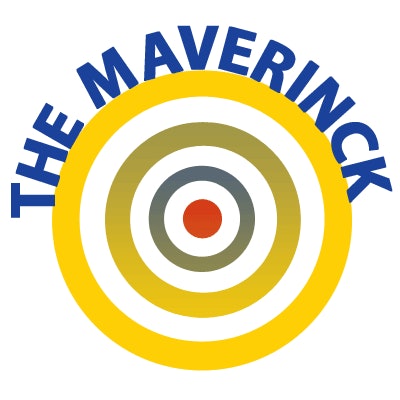
This is a slightly different follow-up of the gadolinium scandal. I believe that I have put on the table in earlier columns and in our MR textbook all facts I know and feel publishable.1 There are numerous publications about the topic containing "fake news," among them papers by certain authors that have to be digested cum grano salis as described earlier2 because they try to whitewash themselves or make money.
Many feel competent enough to offer their humble opinion about gadolinium-based contrast agents (GBCAs), not only radiologists and physicians of every shade and color, but also physicists and chemists, as well as want-to-be experts such as journalists and movie actors. Of particular interest may be in the U.S., where lawyers mix up ethical and moral values with personal financial advantages.
 Dr. Peter Rinck, PhD, is a professor of diagnostic imaging and the president of the Council of the Round Table Foundation (TRTF) and European Magnetic Resonance Forum (EMRF).
Dr. Peter Rinck, PhD, is a professor of diagnostic imaging and the president of the Council of the Round Table Foundation (TRTF) and European Magnetic Resonance Forum (EMRF).They all incense fear and lead to confusion. Patients are increasingly becoming uneasy and worried. I am receiving letters like this one:
I am trying to find alternatives to gadolinium as I don't think the risk is worth it. Would the newer MRI machines with bigger magnets, more sensitive detectors, more computing power, and techniques to enhance the images, thinner slices, higher resolution, be good enough to detect a 3 mm to 4 mm in size or smaller acoustic neuroma tumor on the hearing nerve? How small a tumor (mm) can a 3-tesla MRI detect without gadolinium contrast?
For some time now, there has been a witch hunt going on in the U.S. against the Italian company Bracco and its contrast agent MultiHance (gadobenate, gadobenic acid), a compound superior to all of the competitors: far better relaxivity and higher contrast, enhancing both in the central nervous system and liver. As I have already stated earlier:
Gadobenic acid (MultiHance) as well as gadoxetic acid (Primovist) are excreted by both the kidneys and the liver, although the percentage of liver excretion is far higher for gadoxetic acid. Still, MultiHance is the best-enhancing contrast agent on the market. As far as I am aware, there were no direct cases of [nephrogenic systemic fibrosis] with MultiHance, but there were a small number of 'confounding' cases with combinations of Omniscan. There is no scientific or statistically based reason to damn MultiHance and to promote Primovist for liver examinations, as [the European Medicines Agency] has now done.3
There is an increasing animosity against the European Medicines Agency (EMA) and their decisions; some companies say their precautionary measures are not based on facts and that the EMA used controversial "experts." There are also rumors about partial outside influence. I believe there has been a strong will from some to kill MultiHance.
Agencies such as the EMA and the U.S. Food and Drug Administration (FDA) differ in regulating the use of gadolinium-based contrast agents. The FDA's Medical Imaging Drugs Advisory Committee met on 8 September 2017 and finally stated:
To date, the only known adverse health effect related to gadolinium retention is a rare condition called nephrogenic systemic fibrosis (NSF) that occurs in a small subgroup of patients with pre-existing kidney failure. We have also received reports of adverse events involving multiple organ systems in patients with normal kidney function. A causal association between these adverse events and gadolinium retention could not be established.4
Among others, the committee invited the testimony of U.S. movie star Chuck Norris and his wife Gena, who suffers from rheumatoid arthritis. After three MRI examinations five years ago, Norris and his wife Gena claim that she now has "gadolinium deposition disease" and, according to an article in the U.S. news magazine Newsweek, are suing for $10 million in damages, first and foremost directed at Bracco.5
According to reports, Gena Norris suffered from symptoms that include burning sensation in various parts of the body.
The term "gadolinium deposition disease" was introduced by Dr. Richard C. Semelka in 2016.6 It's a syndrome whose symptoms are headache, cognitive disturbance, skin hyperpigmentation, and arthralgia -- which according to the authors are clinical manifestations of presumed gadolinium toxicity in patients with normal renal function.
Semelka also proposed the application of Ca-DTPA and Zn-DTPA to reduce or eliminate gadolinium deposition disease symptoms. Meanwhile, a clinical study to prove this was suspended.7 The idea is chemically sound -- but the gadolinium has to be reachable and removable. If clustered as an insoluble phosphate deposit, it is rather unlikely that it will be caught and removed.
After at least 400 million doses of GBCAs have been injected into humans since the 1980s, there is no convincing evidence of systematic symptoms after recommended application, other than NSF in patients with impaired renal function. To repeat the statement of the FDA: "A causal association between these adverse events and gadolinium retention could not be established."
Dr. Peter Rinck, PhD, is a professor of diagnostic imaging and the president of the Council of the Round Table Foundation (TRTF) and European Magnetic Resonance Forum (EMRF). He has no financial interests to disclose.
References
- Rinck PA. Contrast Agents. in: Rinck PA. Magnetic Resonance in Medicine. A Critical Introduction. 12th ed. BoD, Norderstedt, Germany. 2018. pp. 231-255.
- Rinck PA. Gadolinium -- will anybody learn from the debacle? Rinckside, 2015; 26(9):23-26.
- Rinck PA. Gadolinium contrast: A farewell to well-known brands. Rinckside, 2017; 28(2):3-4.
- Food and Drug Adminstration (of the United States of America). Gadolinium-based contrast agents for magnetic resonance imaging (MRI): Drug safety communication -- No harmful effects identified with brain retention. 5 May 2017 (www.fda.gov/Safety/MedWatch/SafetyInformation/SafetyAlertsforHumanMedicalProducts/ucm559709.htm); and: Gadolinium-based contrast agents (GBCAs): Drug Safety Communication -- retained in body; new Class Warnings. 19 December 2017 (www.fda.gov/Safety/MedWatch/SafetyInformation/SafetyAlertsforHumanMedicalProducts/ucm589580.htm).
- Sheridan K. What is gadolinium? Chuck Norris claims it poisoned his wife. Newsweek, 7 November 2017. www.newsweek.com/what-gadolinium-chuck-norris-claims-it-poisoned-his-wife-704647.
- Semelka RC, Ramalho M, AlObaidy M, Ramalho J. Gadolinium in humans: A family of disorders. AJR, 2016;207:229-233. and: Semelka RC, Ramalho J, Vakharia A, AlObaidy M, Burke LM, Jay M, Ramalho M. Gadolinium deposition disease: Initial description of a disease that has been around for a while. Magn Reson Imaging. 2016;34:1383-1390.
- Semelka R. Effects of iv-administered Ca-DTPA and Zn-DTPA to treat patients with Gadolinium Deposition Disease. ClinicalTrials.gov Identifier: NCT02947022. https://clinicaltrials.gov/ct2/show/NCT02947022
The comments and observations expressed herein do not necessarily reflect the opinions of AuntMinnieEurope.com, nor should they be construed as an endorsement or admonishment of any particular vendor, analyst, industry consultant, or consulting group.



















